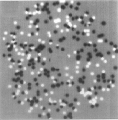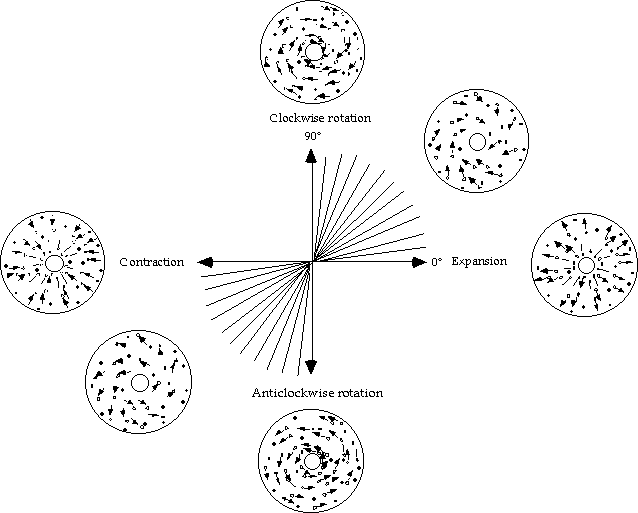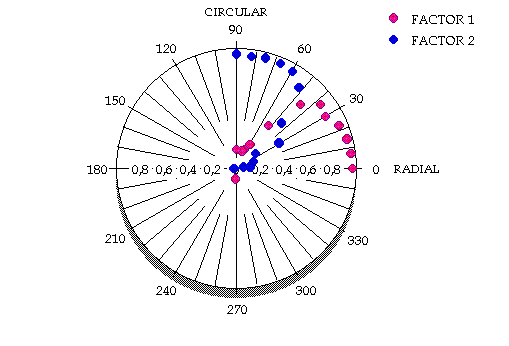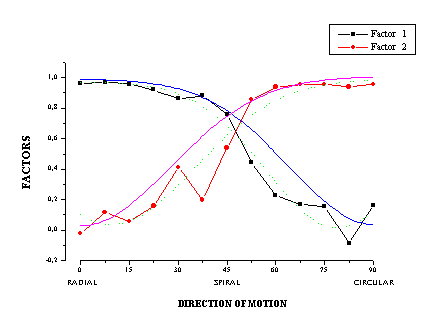
Psychophysic Evidence for the existence of
a detector of radial and circular movement
Purpose:
The aim of my thesis, that I conducted under the guide of Professor David
C. Burr, was to demonstrate the existence of an independent detector of
radial and circular movement and to know by which and by how many components
it made of. The radial and circular movements are important, because they
are two of the components of the optic flow-fields, the patterns of the
visual movement that we meet when we move through our enviroment, that
provide the informations about ego motion and about the structure of the
external word.
Method:
The stimuli used in this experiment were a pattern of moving random dots
(Fig. 1).

Fig. 1
A proportion of the dots was displaced to produce radial, circular
and spiral (both radial and circular) movement, while the other dots moved
at random. If we represent the experimental conditions on a system of cartesian
axis, in which at 0 degrees the stimuli are in expansion and at 90 degrees
they are in rotation, and thus, the expansion and the contraction are placed
at the two extremities of the horizontal axis and the clockwise and anticlockwise
rotation at the two extremities of the vertical axis, at 45 degrees there
is the spiral movement. The stimuli varied in function of the degrees.
There were 13 experimental conditions (Fig. 2).

Fig. 2
Subjects were requested to discriminate motion direction: expansion
from contraction, clockwise from anticlockwise rotation. From trial to
trial, the dots proportion in coherent motion was determined by the adaptive
QUEST procedure and the thresholds were calculated by fitting a cumulative
gaussian curve to the psychometric data. I made the factorial analysis
of the principal components with the logarithms of the data obtained by
the subjects.
Results:
two factors were extracted, providing the psychophysical evidence for the
existence of radial and circular movement detector, composed of the two
factors found representing the two kinds of movement that the detector
can detect (Fig. 3).

Fig. 3
I made the gaussian fitting on the two factors extracted (Fig. 4)
and finally I made the fitting of the individual subjects data with the
sum of the gaussians of the two factors.

Fig. 4
Conclusions:
The results of this study suggest that there is only one specific detector
for the radial and circular movement made of two orthogonal factors, that
is by the two kinds of movement that it can detect.